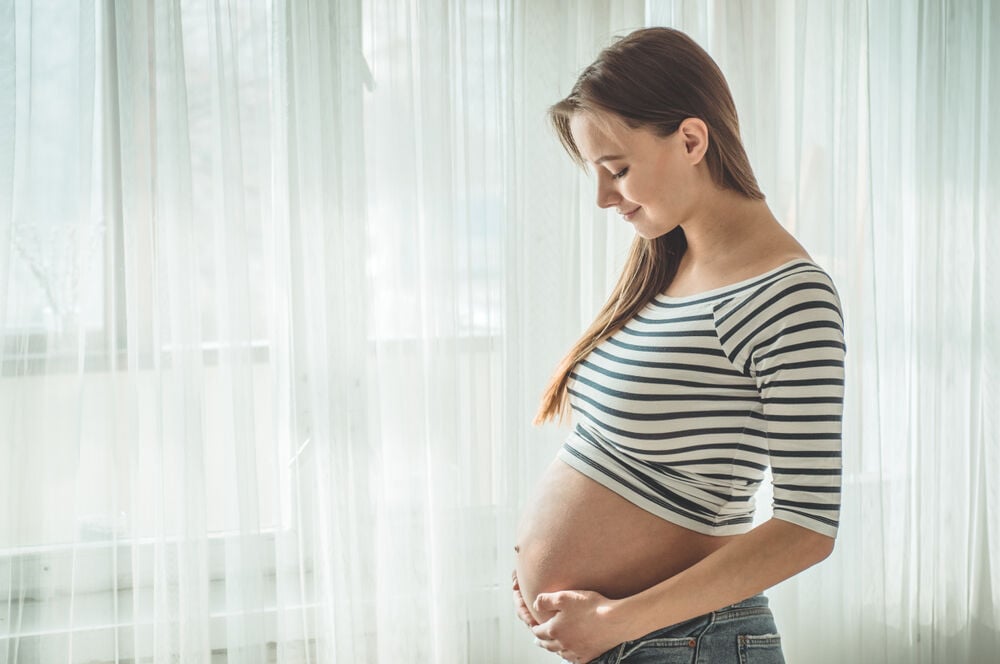Infertility due to endometriosis is something many women struggle with. Endometriosis can affect your ability to become pregnant and carry a healthy pregnancy. However, there are treatment options available to help women with endometriosis become pregnant. Read on for more information that you can use when you talk with your doctor.
-
Tracking cycle
-
Getting pregnant
-
Pregnancy
-
Help Center
-
Flo for Partners
-
Anonymous Mode
-
Flo app reviews
-
Flo Premium New
-
Secret Chats New
-
Symptom Checker New
-
Your cycle
-
Health 360°
-
Getting pregnant
-
Pregnancy
-
Being a mom
-
LGBTQ+
-
Quizzes
-
Ovulation calculator
-
hCG calculator
-
Pregnancy test calculator
-
Menstrual cycle calculator
-
Period calculator
-
Implantation calculator
-
Pregnancy weeks to months calculator
-
Pregnancy due date calculator
-
IVF and FET due date calculator
-
Due date calculator by ultrasound
-
Medical Affairs
-
Science & Research
-
Pass It On Project New
-
Privacy Portal
-
Press Center
-
Flo Accuracy
-
Careers
-
Contact Us
Endometriosis and Infertility: Can Endometriosis Cause Infertility and What to Do About It?


Every piece of content at Flo Health adheres to the highest editorial standards for language, style, and medical accuracy. To learn what we do to deliver the best health and lifestyle insights to you, check out our content review principles.
What is endometriosis?
Endometriosis is a condition that occurs when the tissue that forms the inner lining of the uterus (endometrium) grows outside of the uterus. This abnormal tissue growth typically occurs within the pelvis, in the ovaries, fallopian tubes, pelvic peritoneum (the lining of the pelvic cavity), uterine ligaments and its outer surface, bladder, intestines, and rectum.
Endometriosis is estimated to affect between 2 and 10 percent of women of reproductive age. In rare cases, endometriosis has been found in girls before they start their period. However, up to half of women who have chronic pelvic pain, especially right before and during their periods, may have endometriosis that goes undiagnosed. Endometriosis can result in a reduced ability to conceive, called subfertility.
A common symptom of endometriosis is a persistent dull ache in the pelvis. Other women may experience very painful and heavy periods or pain during sex (dispareunia). Many women report having difficulty conceiving and carrying a pregnancy. However, some women have no symptoms at all and may not even know that they have the condition.
To diagnose endometriosis, your doctor will first take your medical history and do a physical examination, including a pelvic exam. Other examinations that can help diagnose endometriosis are ultrasounds, CTs, and MRI scans. But the only way to diagnose endometriosis for sure is to perform a laparoscopy and take biopsies from suspicious tissues. This procedure is done by inserting a laparoscope (a thin tube with a small camera) through a small incision. A technician will then look at the tissue removed during the biopsy with a microscope to confirm the diagnosis of endometriosis.
Sometimes, endometriosis isn’t diagnosed until a woman is having surgery, such as getting a tubal ligation (commonly known as “getting your tubes tied”) or a Cesarean section.
Causes of endometriosis
The cause of endometriosis is still unknown, but there are several theories. One explanation is that when a woman has her period, some of the blood and endometrium backs up through the fallopian tubes into the abdomen. The tissue then attaches in the abdominal cavity and starts to grow there. The medical term for this is retrograde or reverse menstruation.
Endometriosis is considered one of the three major causes of female infertility. According to the American College of Obstetricians and Gynecologists, about 40 percent of women with infertility have endometriosis.
Another theory states that endometrial tissue may spread via blood or lymphatic vessels, just like cancer cells. Yet another theory suggests that any cell can transform into an endometrial cell. Endometrial cells may attach, implant, and grow near surgical scars after C-sections or surgeries on the uterus. Additionally, some researchers think there is a genetic component to the development of endometriosis.
Endometriosis and fertility
Endometriosis is considered one of the three major causes of female infertility. According to the American College of Obstetricians and Gynecologists, about 40 percent of women with infertility have endometriosis. The American Society for Reproductive Medicine states that endometriosis is found in 24 to 50 percent of women who are experiencing infertility. There are several different ways that endometrial tissue outside the uterus hurts a woman’s ability to get pregnant and several mechanisms that can explain the association between endometriosis and infertility. They include:
Take a quiz
Find out what you can do with our Health Assistant
- Distorted pelvic anatomy. In more advanced cases of endometriosis, adhesions begin to form between the uterus, ovaries, fallopian tubes, and sometimes intestines. These adhesions can make it harder for the ovary to release an egg and block it from reaching the fallopian tube. Endometriosis can also block the fallopian tubes with scar tissue and adhesions.
- Endocrine and ovulatory abnormalities. According to the latest research, ovarian endometriosis can negatively affect ovulation and the number of mature eggs that can be fertilized.
- Altered hormonal and cell-mediated functions in the endometrium. Inflammation from endometriosis can also affect the sperm inside the uterus and the released egg, creating an inhospitable environment that makes it hard for fertilization and implantation to be successful. According to the latest research, there is an increased risk of miscarriage associated with endometriosis. Endometriosis is also associated with other obstetric and fetal complications including preterm delivery, caesarean section delivery, and neonatal unit admission following delivery.
Endometriosis and pregnancy

Pregnancy can actually alleviate the symptoms of endometriosis for some women. During pregnancy, your body produces elevated levels of progesterone. This hormone may suppress endometrial growth. In fact, one treatment for endometriosis is a prescription for progestin (synthetic progesterone) to treat endometriosis-associated pain and suppress the endometrial tissue growth. If you choose to breastfeed, you may also have some relief from your endometriosis symptoms. The hormonal changes during breastfeeding may have the same effect on your endometriosis that pregnancy did.
Every woman is different, however. Some women may not experience relief from their endometriosis during pregnancy and may, unfortunately, have more pain. If you have endometrial growths on your uterus, they can stretch as your uterus expands, causing discomfort and a dull ache in your abdomen. If you have ovarian endometriosis in the form of an endometrioma, pregnancy may cause it to grow or even rupture.
Pregnancy can actually alleviate the symptoms of endometriosis for some women. During pregnancy, your body produces elevated levels of progesterone. This hormone may suppress endometrial growth.
Endometriosis is also associated with a higher risk of miscarriage and preterm birth. If you are pregnant and have endometriosis, your doctor may prescribe medication to help you deliver to term. If you’re pregnant and notice a bloody discharge, pressure in your abdomen, and cramping, seek medical attention immediately, as this may indicate preterm labor.
Placenta previa is another health risk associated with endometriosis. Normally, the placenta attaches at the top or side of the uterus. In women with endometriosis, though, the placenta may partially or totally cover the opening of the cervix, a condition called placenta previa. Placenta previa increases the risk of severe bleeding, which can be dangerous for the baby. If you notice bright red vaginal bleeding during pregnancy, it can indicate placenta previa. Your doctor may advise you to avoid sex or exercise and limit the amount of time spent on your feet.
How to improve chances of successful conception with endometriosis
If you have endometriosis, you can try to improve your chances of getting pregnant by maintaining a healthy vitamin-rich diet and choosing foods that have anti-inflammatory properties. Additional fiber and water may also help with inflammation. Dietary adjustments may help with symptoms for women with mild forms of endometriosis.
Generally, treatment of endometriosis depends on factors like overall health, current symptoms, and reproductive plans. Treatment can be medical, surgical, or both.
Your doctor may recommend non-steroidal anti-inflammatory medications to relieve pelvic pain. Hormonal treatment may include gonadotropin-releasing hormone agonists, progestins, oral contraceptive pills, and/or androgens. All these medication groups work by adjusting the normal cyclic production of sex hormones.
Surgical treatment may include laparoscopic or laparotomic removal of endometrial growth and adhesion separation. In some severe cases, doctors may recommend a hysterectomy (removing the uterus with or without fallopian tubes and ovaries).
If pregnancy doesn’t occur within six months after surgery or stopping hormonal treatment, your doctor may recommend a different method for getting pregnant, like intrauterine insemination, superovulation, or in-vitro fertilization.
When to see a doctor
If you experience heavy, painful periods, chronic pelvic pain, or dispareunia (pain during sex), your doctor may want to examine you for endometriosis. Speaking with your doctor about your pain and heavy bleeding is a good first step. Some questions to ask your doctor are:
- What are my options for treatment?
- What do you think this treatment will do for me?
- Are there any side effects of this treatment?
- Are there lifestyle changes I can make to improve my chances of becoming pregnant?
- What happens if my symptoms don’t improve?
- Will my endometriosis get worse if I do nothing?
- What are the effects on fertility?
The takeaway
Endometriosis is a chronic condition when endometrial tissue grows out of the uterus. It can cause symptoms like severe pelvic pain right before or during periods, heavy menstrual bleeding, and pain during intercourse. It may also cause no symptoms at all. Endometriosis can cause infertility, but that doesn’t mean it’s impossible to get pregnant if you have it. Risks associated with endometriosis, like increased chances of miscarriage and placenta previa, can make pregnancy more difficult. If you know that you have endometriosis, make sure to talk about it with your doctor and/or obstetrician to find the best treatment plan for you.


Hey, I'm Anique
I started using Flo app to track my period and ovulation because we wanted to have a baby.


The Flo app helped me learn about my body and spot ovulation signs during our conception journey.


I vividly
remember the day
that we switched
Flo into
Pregnancy Mode — it was
such a special
moment.
Real stories, real results
Learn how the Flo app became an amazing cheerleader for us on our conception journey.




